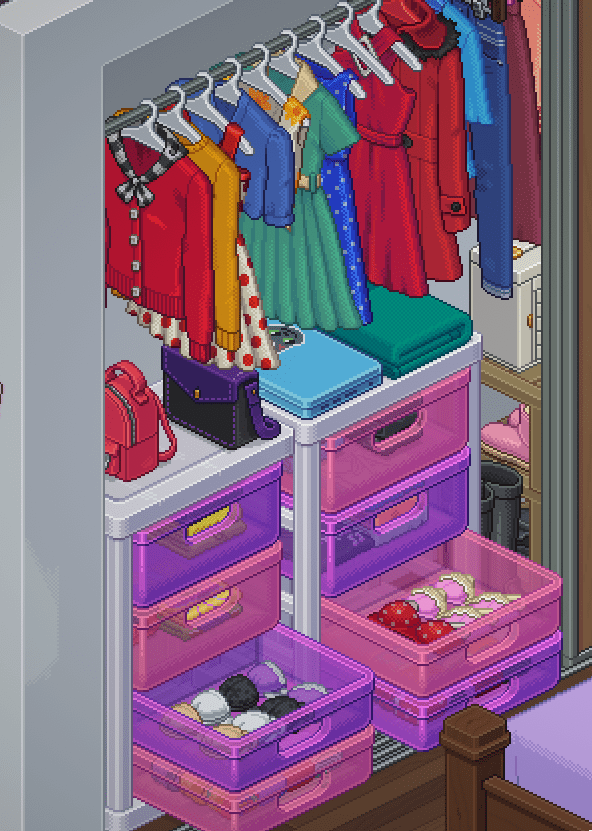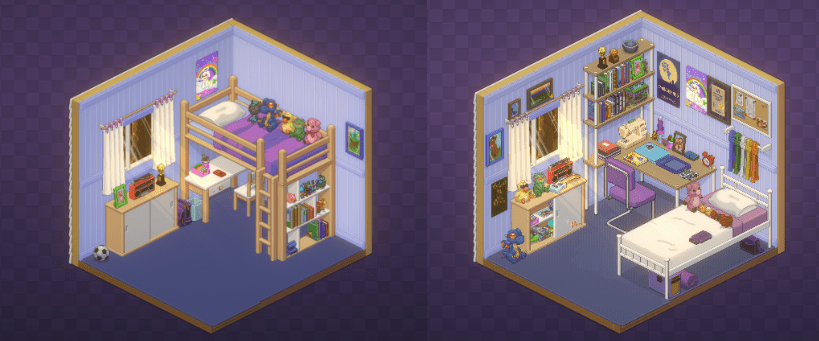For this week’s critical play, I chose Unpacking by Witch Beam on PC. This was a super viral puzzle game a few years ago about taking items out of boxes and putting them into a house both in a way that fits and makes sense logically. Like any good viral game, it’s available on virtually any platform. The target audience is players who love cozy and satisfying games, so the main type of fun is submission, which was fun for me because it’s pretty different than the types of games I usually play!
Unpacking is interesting in the puzzle game genre because rather than using puzzles to block advancement of the narrative, the mechanic of taking out and placing each item to complete the puzzle is what conveys the narrative.

Primarily, this means that Unpacking utilizes an embedded narrative. Like many other embedded narratives, you don’t have to actually understand the narrative to progress the game. But, unlike other embedded narratives, the way Unpacking embeds the narrative makes it nearly impossible not to both understand and feel a connection to the narrative. That is to say, rather than using written narrative, which in many games takes the form of intractable optional elements scattered around the space, Unpacking has almost no text. Instead, it’s narrative is told through the game objects the player manipulates to complete the puzzle of each level. An antiquated box computer tells use the decade, a shaving razor tells us our main character is growing up, children’s toys tells us the age of our main character. These personal items paint a clear idea of who our player character is through only observation. The mechanic of forcing the player to pick up and consider each item, it’s purpose and it’s place, to complete the puzzle, also artfully embeds the narrative.

Additionally, narrative is embedded in the space of each level. Moving from a college dorm to your boyfriend’s apartment tells a clear progression without needing any reading. Most explicitly, there are two levels spaced some time apart which take place in the same space: your childhood bedroom. Though these levels have the same setting, you have many more items in the second level because you’re older and have acquired more things throughout your life. Coming back to this childhood room provides the player a clear narrative beat – you went to college, moved in with a boyfriend, and then broke up and moved back into your parents house. Without changing any other aesthetic elements, the gameplay immediately takes on a melancholic feeling where previously it was hopeful.
This is emphasized by the difficulty of each level. Unpacking only uses one puzzle. But, one way the game modulates difficulty is through the number of items you have to fit into a space. As time goes on, the player has more items, but also more space. But, in the moment of having to move back into your childhood room, your number of items no longer matches your space. This sudden increase in difficulty creates a sense of desperation in the player as they try to fit everything, mirroring the player character’s own disorganized mental state. Similarly, moving in with your first boyfriend is also a difficult level, as there are already any things in the space that aren’t yours. Upon completion, nearly every crevice in the house is filled. Moving in is hard because your boyfriend doesn’t make space for you. This is contrasted by the last level, where the player moves in with their final partner. There are lots of things, but everything fits easily. These subtleties convey surprisingly complex concepts only through the number of items and the size of the space.
In this way, Unpacking impressively creates a clear narrative arc with an inciting incident (leaving for college) and darkest moment (breaking up with your partner and moving back into your parents house) all with only it’s puzzle mechanics driving the narrative.



